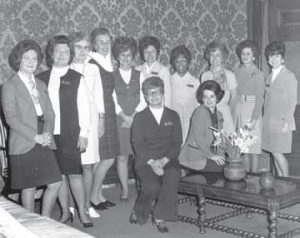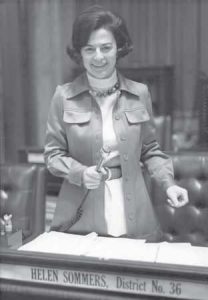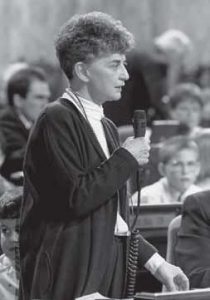The building at the corner of Union and Capitol Way is named after an important Olympia legislative pioneer, Helen Sommers.
By the time she retired from the state legislature in 2008, Sommers had the longest tenure of any other legislator except one, John L. O’Brien. It is fitting that O’Brien already has a capitol campus building named after him.
 The new building is replacing the historic Capitol Park Building, which, when it was built, was described as a “city in itself.” The building was the first true shopping center in Olympia. Early tenants included a version of the Olympia Farmers Market, known as a public market back then, KGY Radio, several attorneys and a business college.
The new building is replacing the historic Capitol Park Building, which, when it was built, was described as a “city in itself.” The building was the first true shopping center in Olympia. Early tenants included a version of the Olympia Farmers Market, known as a public market back then, KGY Radio, several attorneys and a business college.

Because of its proximity to the capitol campus, it eventually became home to several state agencies, and it was purchased by the state’s Department of Enterprise Services.
Sommers was a Seattle Democrat who began her part-time life in Olympia when she was first elected to the state legislature in 1972. Sommers was nowhere near the first woman elected to the legislature; that honor belongs to a pair of women elected 60 years before. Before Sommers, dozens of women had served, but political changes in the 1970s inspired even more women to become politically involved.
From “Celebrating 100 Years of Women in the Legislature”:
The introduction and passage of an equal rights amendment to the Washington State Constitution in 1972 showed that success was possible, but also highlighted the need for more women in positions of power to further the goals of sexual equality.
Washington women responded. In 1972, twenty-nine women filed to run for the Legislature and although only twelve won (and all of them in the House), they set a new precedent for involvement that continued to grow.

The legislature’s place in the Olympia community changed in the early years that Sommers served here. Up until that point, the legislature only met every other year and had practically no permanent Olympia-based staff on which to depend during the interim. While the capitol campus can still be accurately described as a ghost town during the interim months, before the 1970s, it was even worse.
In a recorded interview, Sommers describes the changes made by then Speaker Leonard Sawyer:
That’s why it was so important to establish an annual session of the Legislature and a full-time staff of professionals in Olympia to plan and prepare for the next session and to keep legislators – who were at home and not in Olympia – involved in the process and ready for the next session. Sawyer understood that and made it his goal. He established the professional staff, which made a huge difference in the power and influence of the Legislature for the first time in Washington State.
Generally, Sommers’ career in Olympia spanned two massive changes in politics. While in the 1970s her election in a traditionally Republican district of Seattle was considered a coup, her subsequent elections over the decades charted the political change in the city. By the 1990s, she was winning with 80 percent of the vote, showing how Seattle, and Puget Sound in general, had changed course.

She also made several attempts at leadership in the legislature, losing to male candidates each time. While she was widely described as an influential force, she could not, for much of her career, translate that into legislative power. Said the Seattle Times at one point: “Rep. Helen Sommers continues to have the brains to be top rank, but apparently not the personality to win leadership roles.”
During her time in the legislature, Sommers also showed a great interest in her working environment, specifically the historic capitol campus. In 1993 she was the force behind the documentation of the various trees on the campus. She encouraged a University of Washington arborist to come to Olympia to photograph and document every tree. She then had a pamphlet published, the first such guide to the trees on the campus.
















































